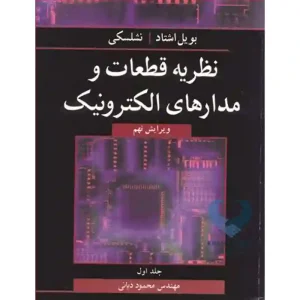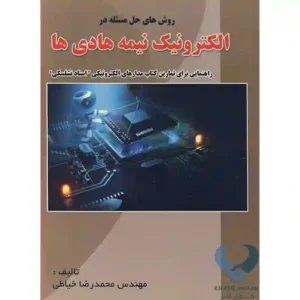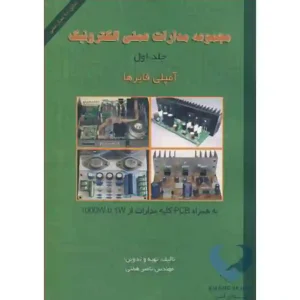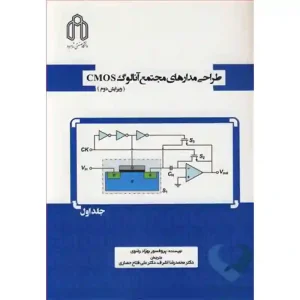درباره کتاب DESIGN OF ANALOG CMOS INTEGRATED CIRCUITS
کتاب DESIGN OF ANALOG CMOS INTEGRATED CIRCUITS تالیف پروفسور بهزاد رضوی توسط انتشارات نوپردازان به چاپ رسیده است.
درباره نویسنده
Behzad Razavi received the BSEE degree from Sharif University of Technology in 1985 and the MSEE
and PhDEE degrees from Stanford University in 1988 and 1992, respectively. He was with AT&T Bell
Laboratories and Hewlett-Packard Laboratories until 1996. Since 1996, he has been Associate Professor
and subsequently Professor of Electrical Engineering at University of California, Los Angeles. His current
research includes wireless transceivers, frequency synthesizers, phase-locking and clock recovery for
high-speed data communications, and data converters.
Professor Razavi was an Adjunct Professor at Princeton University from 1992 to 1994, and at Stanford
University in 1995. He served on the Technical Program Committees of the International Solid-State
Circuits Conference (ISSCC) from 1993 to 2002 and VLSI Circuits Symposium from 1998 to 2002.
Preface to the First Edition (پیشگفتار ویرایش اول کتاب)
In the past two decades, CMOS technology has rapidly embraced the field of analog integrated circuits, providing low-cost, high-performance solutions and rising to dominate the market. While silicon bipolar and III-V devices still find niche applications, only CMOS processes have emerged as a viable choice for the integration of today’s complex mixed-signal systems. With channel lengths projected to scale down to 0.05 μm, CMOS technology will continue to serve circuit design for another two decades. Analog circuit design itself has evolved with the technology as well. High-voltage, high-power analog circuits containing a few tens of transistors and processing small, continuous-time signals have gradually been replaced by low-voltage, low-power systems comprising thousands of devices and processing large, mostly discrete-time signals. For example, many analog techniques used only ten years ago have been abandoned because they do not lend themselves to low-voltage operation. This book deals with the analysis and design of analog CMOS integrated circuits, emphasizing fundamentals as well as new paradigms that students and practicing engineers need to master in today’s industry. Since analog design requires both intuition and rigor, each concept is first introduced from an intuitive perspective and subsequently treated by careful analysis. The objective is to develop both a solid foundation and methods of analyzing circuits by inspection so that the reader learns what approximations can be made in which circuits and how much error to expect in each approximation. This approach also enables the reader to apply the concepts to bipolar circuits with little additional effort. I have taught most of the material in this book both at UCLA and in industry, polishing the order, the format, and the content with every offering. As the reader will see throughout the book, I follow four “golden rules” in writing (and teaching): (1) I explain why the reader needs to know the concept that is to be studied; (2) I put myself in the reader’s position and predict the questions that he/she may have while reading the material for the first time; (3) With Rule 2 in mind, I pretend to know only as much as the (first-time) reader and try to “grow” with him/her, thereby experiencing the same thought process; (4) I begin with the “core” concept in a simple (even imprecise) language and gradually add necessary modifications to arrive at the final (precise) idea. The last rule is particularly important in teaching circuits because it allows the reader to observe the evolution of a topology and hence learn both analysis and synthesis.



















دیدگاهها
هیچ دیدگاهی برای این محصول نوشته نشده است.